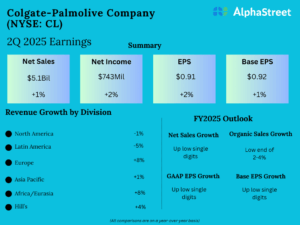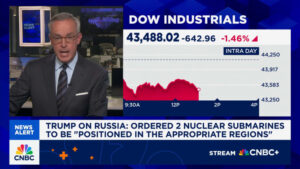
Image source: Getty Images
The last year has been brilliant for both BAE Systems (LSE: BA.) and Rolls-Royce (LSE: RR) shares. But what about the next 12 months?
The FTSE 100 defence and aerospace heroes are up 41% and 121% respectively over the last year. Over five years, they’ve climbed 270% and a ridiculous 1,240%.
The post-pandemic recovery in civil aviation gave transformative Rolls CEO Tufan Erginbilgiç a great launchpad when he took over in January 2023. It’s easy to forget Rolls-Royce does defence too, although BAE is the specialist. Geopolitical fears have boosted the sector. Germany and others are pumping cash into rearmament. Arguably, this is now priced in.
FTSE 100 warhorses
Both firms published half-year results last week. On 30 July, BAE Systems reported an 11% jump in sales to £14.6bn, while underlying EBIT climbed 13% to £1.6bn. Order intake dipped slightly to £13.2bn, from £15.1bn last year.
The shares have slowed a bit recently, but I still see plenty of long-term potential. Defence contracts take years to fulfil, and that means years of revenue visibility too. Handy for investors taking the long-term approach.
Next day, Rolls-Royce smashed expectations. Again. Underlying operating profit rocketed 50% to £1.73bn, as revenues climbed 13% to £9.06bn. Free cash flow jumped to £1.58bn. Civil Aerospace surged 17% to £4.79bn. Power Systems was up 20%. The only sluggish bit was Defence, up just 1%. The shares surged another 10% on the day.
Earnings, growth, cash flow
There are risks, though. The biggest would be some much-desired unexpected peace deal. Unlikely, but not impossible. Another is fiscal. European governments may promise more weapons but may struggle to afford them.
Both firms also face company-specific hurdles. For BAE, the risk is stagnating order intake. It’s already down slightly, and may not recover if politicians delay major projects or drag their feet on NATO spending goals.
Sky-high expectations are a concern for Rolls-Royce. A single stutter in growth could trigger a hard reset. As an aircraft engine maker, Rolls is exposed to market volatility as the airline sector can be wobbly.
What analysts expect
So where could £10,000 invested today end up in a year? Sixteen analysts forecast a one-year median price target of 2,107p for BAE Systems, up from today’s 1,813.5p. That’s a projected gain of 16%, which could take a £10,000 investment to £11,600. Not bad at all.
Twelve analysts forecast a median price of 1,048p for Rolls-Royce, which is 1.6% below today’s 1,069.5p. That would shrink £10k to £9,840. Those targets likely pre-date last week’s stellar results. But they don’t surprise me either. I just don’t know how long Turbo Tufan, as he’s now known, can maintain his speed.
Rolls-Royce has two new growth options in small nuclear reactors and engines for narrow-body aircraft. If it conquers those, it could soar still higher. Trading at a price-to-earnings (P/E) ratio of 52.8, the air’s getting thin up there.
I think BAE Systems looks steadier. It’s not cheap with a P/E of 26.3, but it’s well managed and anchored in long contracts. Well worth considering.
Rolls-Royce may be more volatile. With a £90bn market cap, the shares are highly unlikely to double in the next year. Even miracles come with a warning. But it’s impossible to ignore now.



